UNDERSTANDING THE CHRISTMAS COLORS
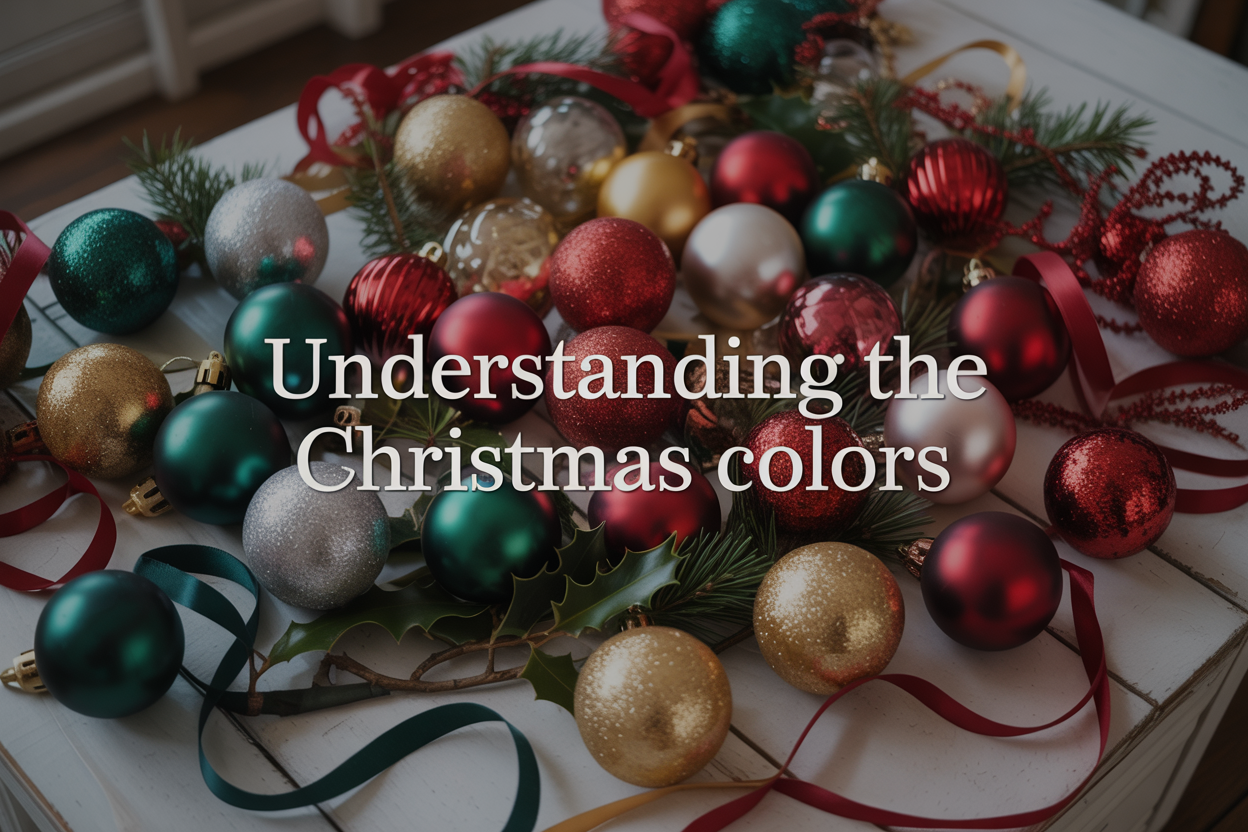
When you walk into any store in December, you're surrounded by red, green, gold, and white decorations. But have you ever wondered why these Christmas colors became so special, or what they actually mean?
This guide is perfect for anyone curious about holiday traditions, homeowners planning their seasonal decor, or families wanting to understand the stories behind Christmas customs. You'll discover the deeper meaning behind those festive colors that fill our homes every December.
We'll explore the fascinating origins and symbolism of traditional Christmas colors, revealing why red represents love and sacrifice while green symbolizes eternal life. You'll also learn how different cultures around the world use unique color combinations to celebrate the season, and discover modern Christmas color trends that go beyond the classic red and green palette.
Traditional Christmas Color Meanings and
Origins

Red Symbolizes Love, Sacrifice, and the Blood of Christ
Red stands as one of the most powerful Christmas colors meaning dates back centuries to early Christian traditions. This vibrant hue carries deep spiritual significance, representing the ultimate sacrifice of Jesus Christ and the blood He shed for humanity's salvation. Early Christians embraced red during Advent and Christmas celebrations as a visual reminder of divine love and redemption.
The color red also connects to the legendary Bishop Nicholas of Myra, who later became known as Saint Nicholas or Santa Claus. Historical accounts describe him wearing red robes as he distributed gifts to the poor, establishing the foundation for our modern Santa imagery. This charitable spirit reinforced red's association with love, generosity, and giving during the holiday season.
Beyond religious symbolism, red evokes warmth and comfort during winter's coldest months. The color appears naturally in winter elements like holly berries, poinsettia flowers, and cardinal birds, creating a visual bridge between nature and Christmas color traditions. These natural red accents helped establish the color as an essential element in holiday decorating schemes.
Green Represents Eternal Life and Hope
Green's prominence in traditional Christmas colors stems from evergreen trees and plants that maintain their vitality throughout winter's harsh conditions. Ancient cultures viewed evergreens as symbols of life persisting through death and darkness, making them perfect metaphors for spiritual renewal and eternal hope.
The Christmas tree tradition, popularized in Germany and later spreading worldwide, cemented green's place in holiday celebrations. Fir, pine, and spruce trees became living symbols of God's eternal love and the promise of everlasting life through Christ. Their needle-like leaves and distinctive fragrance created sensory connections that people associated with the Christmas season.
Holly, ivy, and mistletoe also contributed to green's Christmas color symbolism. These plants not only survived winter but often thrived, producing berries and maintaining lush foliage when other vegetation appeared dormant. Medieval Christians saw these hardy plants as representations of Christ's triumph over death and the hope of resurrection.
The psychological impact of green during winter months cannot be understated. When landscapes turn brown and gray, green decorations bring life and energy into homes, creating visual comfort and emotional warmth that supports the season's celebratory mood.
Gold Signifies Royalty, Wisdom, and the Gifts of the Magi
Gold represents the most precious and valuable element in Christmas decorating colors, symbolizing the divine nature of Christ and His royal status as King of Kings. This metallic hue recalls the gifts brought by the Wise Men from the East, who presented gold alongside frankincense and myrrh to honor the newborn Jesus.
The Biblical account of the Magi's gifts established gold as a symbol of earthly wealth offered to divine royalty. Gold represented material value transformed into spiritual offering, demonstrating how worldly treasures pale compared to heavenly gifts. This transformation theme resonates throughout Christmas celebrations, where people exchange gifts as expressions of love rather than mere material transactions.
In medieval and Renaissance art, gold leaf adorned religious paintings and church decorations, creating luminous backgrounds that suggested heavenly light and divine presence. Artists used gold to highlight halos, crowns, and sacred objects, establishing visual connections between precious metals and spiritual significance that persist in modern Christmas color schemes.
The practical appeal of gold in holiday decorating lies in its ability to reflect and amplify light. Candles, stars, and ornaments in gold tones create warm, glowing effects that enhance the cozy atmosphere people seek during winter celebrations. This luminous quality makes gold an ideal accent color that complements both red and green while adding elegance and sophistication to festive color combinations.
Cultural Variations of Christmas Colors Around
the World
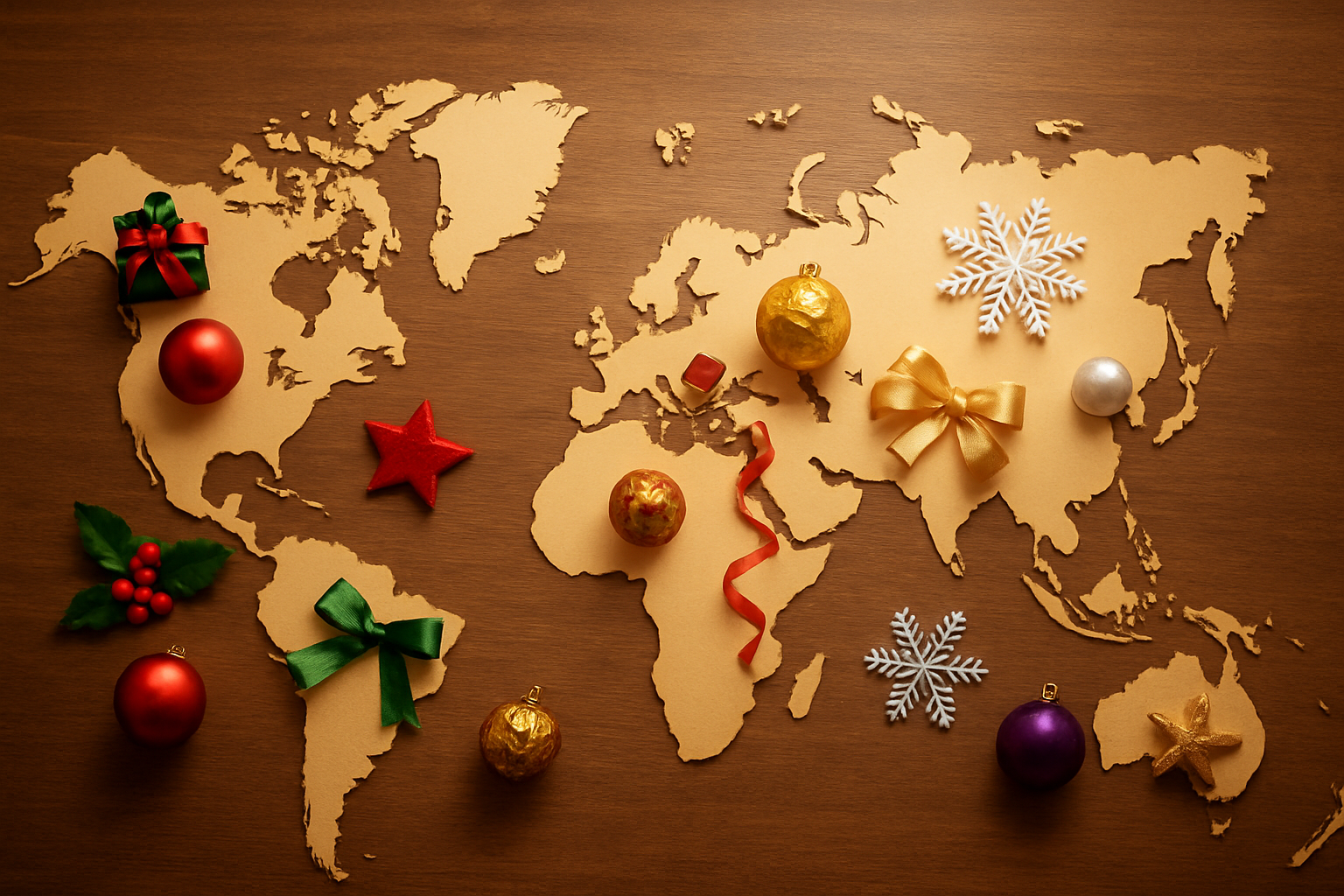
European Countries and Their Unique Color Traditions
European Christmas color traditions extend far beyond the familiar red and green combination, revealing fascinating regional variations that reflect centuries of cultural heritage. In Scandinavia, white and gold dominate Christmas celebrations, symbolizing the pristine snow-covered landscapes and the precious light that returns after long winter nights. Swedish households often incorporate deep blues alongside traditional colors, representing the evening sky and creating a distinctly Nordic aesthetic.
German Christmas markets showcase rich burgundy and forest green decorations, often paired with warm golden lights that illuminate centuries-old wooden ornaments. The German tradition of using natural materials introduces earthy browns and silver accents that complement their famous Christmas markets' authentic atmosphere.
French Christmas celebrations lean heavily into elegant gold and cream palettes, reflecting the country's sophisticated approach to holiday decorating. Purple often appears in French Christmas color schemes, particularly in religious contexts, representing the Advent season's spiritual preparation.
Italian Christmas traditions embrace rich jewel tones, with deep emerald greens, royal blues, and warm amber creating luxurious holiday displays. The influence of Vatican traditions brings papal white and gold into many Italian Christmas celebrations, creating a distinctly religious color symbolism that differs from purely decorative approaches found elsewhere.
British Christmas traditions maintain strong connections to nature-inspired colors, featuring holly green, berry red, and the distinctive Boxing Day blue that appears in many English holiday celebrations.
Asian Interpretations of Christmas Color Symbolism
Asian countries have developed unique Christmas color traditions that blend Western influences with local cultural values and aesthetic preferences. In Japan, white and silver create the foundation of Christmas decorating colors, reflecting the culture's appreciation for minimalism and purity. Japanese Christmas displays often feature delicate pink cherry blossom elements, connecting the holiday to their beloved sakura tradition despite the different seasons.
Chinese Christmas celebrations incorporate traditional red and gold combinations, but with deeper cultural meaning than Western traditions. Red represents prosperity and good fortune in Chinese culture, while gold symbolizes wealth and success. These Christmas color schemes often include touches of jade green, connecting holiday celebrations to important cultural symbols.
South Korean Christmas traditions favor pastel color combinations, particularly soft pinks, light blues, and cream tones that create gentle, romantic holiday atmospheres. Korean Christmas decorations frequently include silver and pearl white accents that reflect the country's modern aesthetic sensibilities.
Philippine Christmas celebrations feature vibrant tropical adaptations of traditional Christmas colors. Bright reds and greens appear alongside sunny yellows and warm oranges, creating festive color combinations that reflect the country's year-round warm climate. The famous Filipino parol star decorations showcase these bold, cheerful colors that bring Christmas joy to tropical settings.
Latin American Christmas Color Customs
Latin American Christmas color traditions create some of the world's most vibrant and emotionally powerful holiday celebrations. Mexican Christmas decorating colors center around deep reds, bright greens, and brilliant golds, often incorporating the national colors that reflect cultural pride. Purple plays a significant role in Mexican Christmas traditions, particularly during Las Posadas celebrations, where the color represents the spiritual journey and preparation for Christmas.
Brazilian Christmas celebrations embrace tropical interpretations of Christmas color symbolism, featuring coral reds, emerald greens, and sunshine yellows that reflect the Southern Hemisphere's summer Christmas season. Brazilian holiday decorations often include turquoise and ocean blue elements that connect Christmas celebrations to the country's coastal culture.
Colombian Christmas traditions showcase rich jewel tones, with deep burgundy, forest green, and antique gold creating sophisticated color schemes. The influence of colonial history brings silver and pearl white accents into Colombian Christmas celebrations, creating elegant combinations that honor both indigenous and European heritage.
Argentinian Christmas color customs blend European influences with South American flair, featuring wine red, sage green, and champagne gold that reflect the country's sophisticated culture. These Christmas color schemes often include touches of sky blue that connect to national identity while maintaining holiday tradition authenticity.
African Christmas Color Celebrations
African Christmas celebrations demonstrate remarkable creativity in adapting Christmas color traditions to reflect local cultures, climates, and available materials. South African Christmas decorations blend traditional red and green with vibrant African textile colors, including rich oranges, deep purples, and bright yellows that celebrate the continent's artistic heritage.
Nigerian Christmas celebrations feature bold, energetic color combinations that reflect the country's dynamic culture. Bright reds and greens appear alongside traditional African colors like burnt orange, golden yellow, and royal purple, creating Christmas decorating colors that honor both holiday traditions and cultural identity.
Kenyan Christmas traditions incorporate earth tones that connect celebrations to the landscape, featuring warm browns, dusty greens, and sunset oranges alongside traditional Christmas colors. These natural color palettes reflect the country's connection to nature and create unique Christmas color schemes that feel authentic to the African environment.
Ethiopian Christmas celebrations, known as Genna, feature white and gold as primary colors, representing purity and divine light. These Christmas colors meaning extends beyond decoration to spiritual significance, with yellow and green elements that connect to national identity while maintaining religious importance.
Ghanaian Christmas decorations showcase the country's famous kente cloth colors, bringing bright golds, deep reds, and royal blues into holiday celebrations that honor both Christmas traditions and African cultural heritage.
Modern Christmas Color Trends and
Alternatives
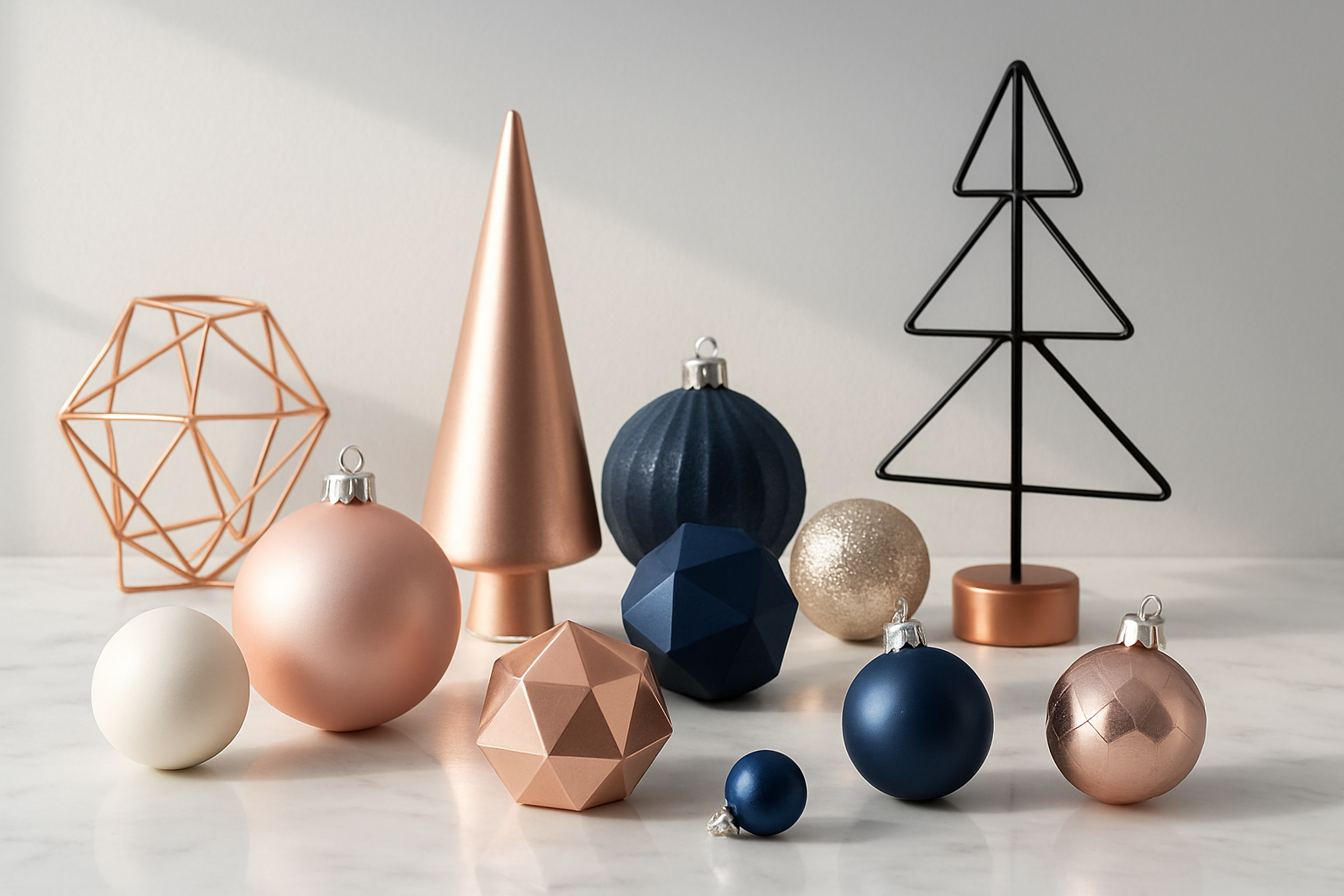
Silver and Blue for Contemporary Winter Elegance
The shift toward silver and blue Christmas color schemes marks a sophisticated departure from traditional red and green combinations. These cool-toned palettes create a winter wonderland aesthetic that feels fresh and modern while maintaining the magical quality Christmas decorating colors require.
Silver serves as the perfect metallic accent, catching and reflecting light to create sparkle throughout your space. When paired with varying shades of blue—from deep navy to pale ice blue—the combination evokes snowy landscapes and starlit winter nights. This Christmas color scheme works particularly well in homes with contemporary or minimalist design philosophies.
The versatility of silver and blue allows for seamless integration with existing decor. Navy blue ornaments paired with silver ribbon create depth, while light blue accents with silver stars maintain an airy, ethereal feel. These festive color combinations photograph beautifully and appeal to those seeking Instagram-worthy holiday displays.
Purple and Pink for Non-Traditional Holiday Themes
Breaking away from conventional Christmas color traditions, purple and pink palettes offer bold alternatives that still capture festive spirit. These unexpected Christmas color schemes challenge traditional boundaries while creating unique, personalized holiday environments.
Deep plums and rich burgundies maintain sophistication while lighter lavenders and soft pinks add playful elements. The psychological impact mirrors traditional red's warmth while introducing creativity and individuality. These Christmas home decor colors work especially well for families wanting to establish their own traditions or those in warmer climates where winter imagery feels disconnected.
Purple ornaments against white tree branches create dramatic contrast, while pink and gold combinations offer luxurious alternatives. These non-traditional palettes allow creative freedom in ornament selection, lighting choices, and textile coordination. The result is distinctly personal holiday decor that stands apart from conventional displays.
White and Cream for Minimalist Christmas Aesthetics
The monochromatic approach using white and cream represents the ultimate in understated Christmas elegance. This minimalist palette strips away visual noise to focus on texture, form, and subtle variations in tone rather than bold color statements.
White Christmas decorating colors create clean, serene environments that feel both modern and timeless. Natural textures like white pinecones, cream-colored wool garlands, and ivory candles add warmth without overwhelming the space. This approach works exceptionally well in Scandinavian-inspired homes or spaces where Christmas decor must integrate seamlessly with existing neutral palettes.
The beauty lies in layering different whites—pure white, antique white, cream, and ivory—to create depth through subtlety. Metallic accents in gold or silver can provide gentle sparkle without disrupting the peaceful aesthetic. This Christmas color symbolism represents purity, peace, and new beginnings, making it particularly meaningful for those seeking calm during the busy holiday season.
Psychological Impact of Christmas Colors on
Holiday Mood

How Red Energizes and Creates Warmth During Cold Months
Red stands out as nature's own antidote to winter's chill. This vibrant hue triggers our sympathetic nervous system, literally raising our heart rate and body temperature. When we see red Christmas decorations, our brains interpret the color as heat and energy, creating a psychological warmth that counteracts the dreary winter months.
The science behind red's energizing effect lies in its wavelength - the longest visible to human eyes. This wavelength stimulates the production of adrenaline and increases blood circulation, making us feel more alert and alive. Christmas decorating colors that feature bold reds can transform a cold, dark room into a space that feels cozy and inviting.
Red also carries powerful emotional associations with passion, love, and excitement. During the holiday season, these feelings amplify our sense of joy and anticipation. Traditional Christmas colors like deep crimson and bright cherry red create an atmosphere of celebration that naturally lifts spirits and encourages social interaction.
Green's Calming Effect and Connection to Nature
Green works as red's perfect psychological counterpart in Christmas color schemes. While red energizes, green soothes and grounds us. This calming effect stems from green's association with nature, safety, and renewal. Our eyes process green more easily than any other color, making it naturally restful and stress-reducing.
During winter months when natural greenery disappears, incorporating green Christmas decorations satisfies our deep-seated need for nature connection. Evergreen trees, holly, and mistletoe don't just serve as festive decorations - they provide vital psychological links to life and growth during dormant winter months.
The various shades of green each offer different psychological benefits. Forest green promotes stability and endurance, while emerald green suggests prosperity and harmony. Sage green brings tranquility, making it perfect for creating peaceful holiday spaces where families can gather and reconnect.
Gold's Ability to Evoke Feelings of Luxury and Celebration
Gold occupies a special place in holiday color psychology as the ultimate celebration color. This metallic hue triggers feelings of warmth, success, and abundance that perfectly match the generous spirit of Christmas. Gold's reflective properties also multiply light, making spaces appear brighter and more magical during dark winter days.
The psychological impact of gold connects to our evolutionary response to sunlight and fire. These golden tones signal safety, prosperity, and divine blessing across virtually all cultures. When incorporated into Christmas color traditions, gold elevates ordinary decorations into something truly special and memorable.
Christmas color symbolism around gold extends beyond mere luxury. This precious metal represents the highest achievements and most sacred moments, making it ideal for marking the year's most important celebration. Gold accents in festive color combinations create focal points that draw attention and create lasting holiday memories.
Color Combinations That Maximize Holiday Joy
The magic of Christmas colors meaning reaches its peak when colors work together harmoniously. The classic red and green Christmas combination creates perfect psychological balance - red's energy paired with green's calm produces sustained happiness without overwhelming excitement or drowsiness.
Strategic color combinations can enhance specific moods:
-
Red + Gold: Maximum celebration and luxury
-
Green + Silver: Sophisticated calm with subtle sparkle
-
Red + Green + Gold: Traditional joy with added richness
-
White + Silver + Blue: Peaceful winter wonderland
-
Burgundy + Forest Green + Copper: Cozy, intimate warmth
Holiday color psychology shows that successful combinations maintain contrast while sharing similar intensity levels. Bright red with muted green feels unbalanced, while deep burgundy with forest green creates sophisticated harmony. Adding metallic accents like gold or silver provides the sparkle that signals celebration while reflecting light to combat seasonal depression.
The most effective Christmas home decor colors layer these combinations throughout spaces, using bold colors for major elements and softer tones for balance. This approach maximizes the psychological benefits of each hue while creating environments that genuinely enhance holiday mood and bring families together.
Practical Applications of Christmas Colors in
Home Decoration
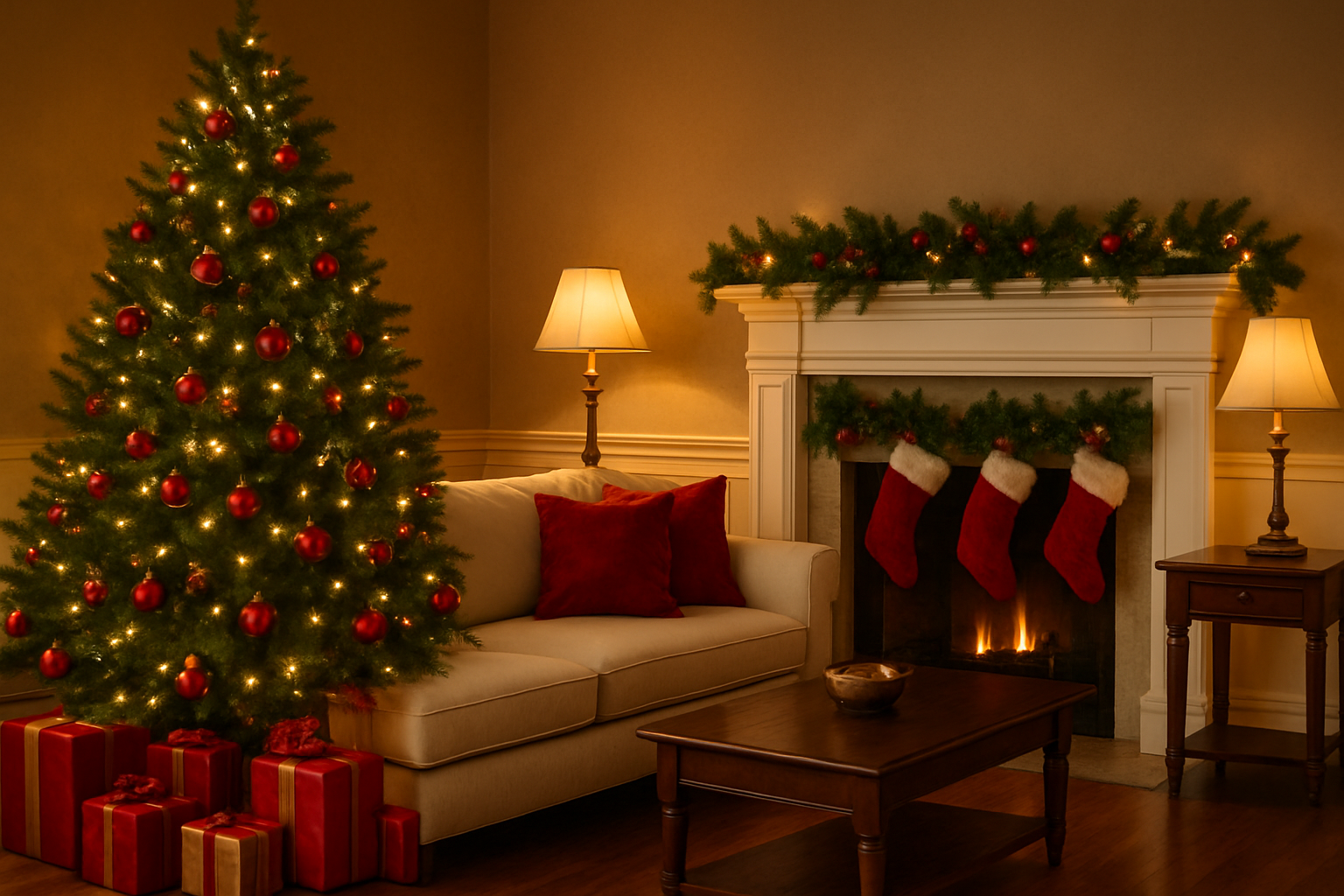
Creating Balanced Color Schemes for Small Spaces
Small spaces can feel magical with the right Christmas color schemes without appearing cramped or overwhelming. Start with a dominant traditional Christmas color like deep forest green or rich burgundy as your base, then add metallic accents in gold or silver to create depth and brightness. This approach prevents visual clutter while maintaining festive appeal.
White and cream work beautifully as secondary colors, reflecting light and making rooms appear larger. Pair soft whites with touches of sage green and copper for a sophisticated look that won't overpower compact areas. Consider using Christmas colors meaning warmth and comfort - like soft reds paired with natural wood tones - to create cozy atmospheres without sacrificing space perception.
Vertical displays maximize impact in small rooms. Hang garland along tall windows or doorframes using your chosen color palette, drawing the eye upward. Wall-mounted wreaths in coordinated colors add festive touches without consuming floor space.
Color Distribution Tips for Small Spaces:
-
60% neutral base (whites, creams, light grays)
-
30% primary Christmas color (green, red, or gold)
-
10% accent color (metallics or complementary hues)
Mixing Traditional and Modern Colors for Unique Displays
Blending traditional Christmas colors with contemporary palettes creates stunning, personalized holiday displays. Start with classic red and green Christmas foundations, then introduce modern elements like dusty pink, navy blue, or charcoal gray for unexpected sophistication.
Rose gold pairs beautifully with traditional deep green, creating an elegant twist on classic Christmas decorating colors. Similarly, burgundy combined with blush pink and copper accents offers warmth while feeling fresh and current. These combinations honor Christmas color traditions while appealing to modern design sensibilities.
Modern Traditional Color Combinations:
| Traditional Base | Modern Addition | Accent Color | Overall Feel |
|---|---|---|---|
| Deep Green | Dusty Blue | Rose Gold | Sophisticated |
| Burgundy Red | Sage Green | Copper | Earthy Elegance |
| Gold | Charcoal Gray | White | Contemporary Luxury |
| Forest Green | Blush Pink | Silver | Romantic Modern |
Texture plays a crucial role when mixing color eras. Combine traditional velvet ribbons with modern geometric ornaments, or pair vintage glass baubles with sleek metallic accents. This layering approach creates visual interest while maintaining cohesive Christmas color schemes.
Using Christmas Colors in Non-Holiday Seasonal Decor
Christmas colors meaning extends beyond December celebrations - these festive color combinations work beautifully for winter decorating through February. Deep greens paired with warm golds create sophisticated winter tablescapes, while burgundy and cream combinations offer cozy elegance throughout cold months.
Transform holiday color psychology into year-round winter warmth by removing obviously Christmas-themed items while keeping the color palette. Replace Santa figures with winter birds, swap Christmas trees for evergreen branches, and exchange holiday ornaments for natural pinecones and berries in matching hues.
Winter Transition Strategies:
-
Keep rich greens and golds, add white branches and silver accents
-
Maintain burgundy base, incorporate cream candles and natural textures
-
Use copper and forest green with dried orange slices for citrus warmth
-
Combine navy and gold with winter white for sophisticated seasonal style
Incorporate these Christmas home decor colors into everyday items like throw pillows, table runners, and artwork. A deep green velvet cushion or burgundy wool throw maintains seasonal warmth without screaming "Christmas" to February visitors. This approach maximizes your decorating investment while creating seamless seasonal transitions that feel intentional rather than forgotten holiday decor.
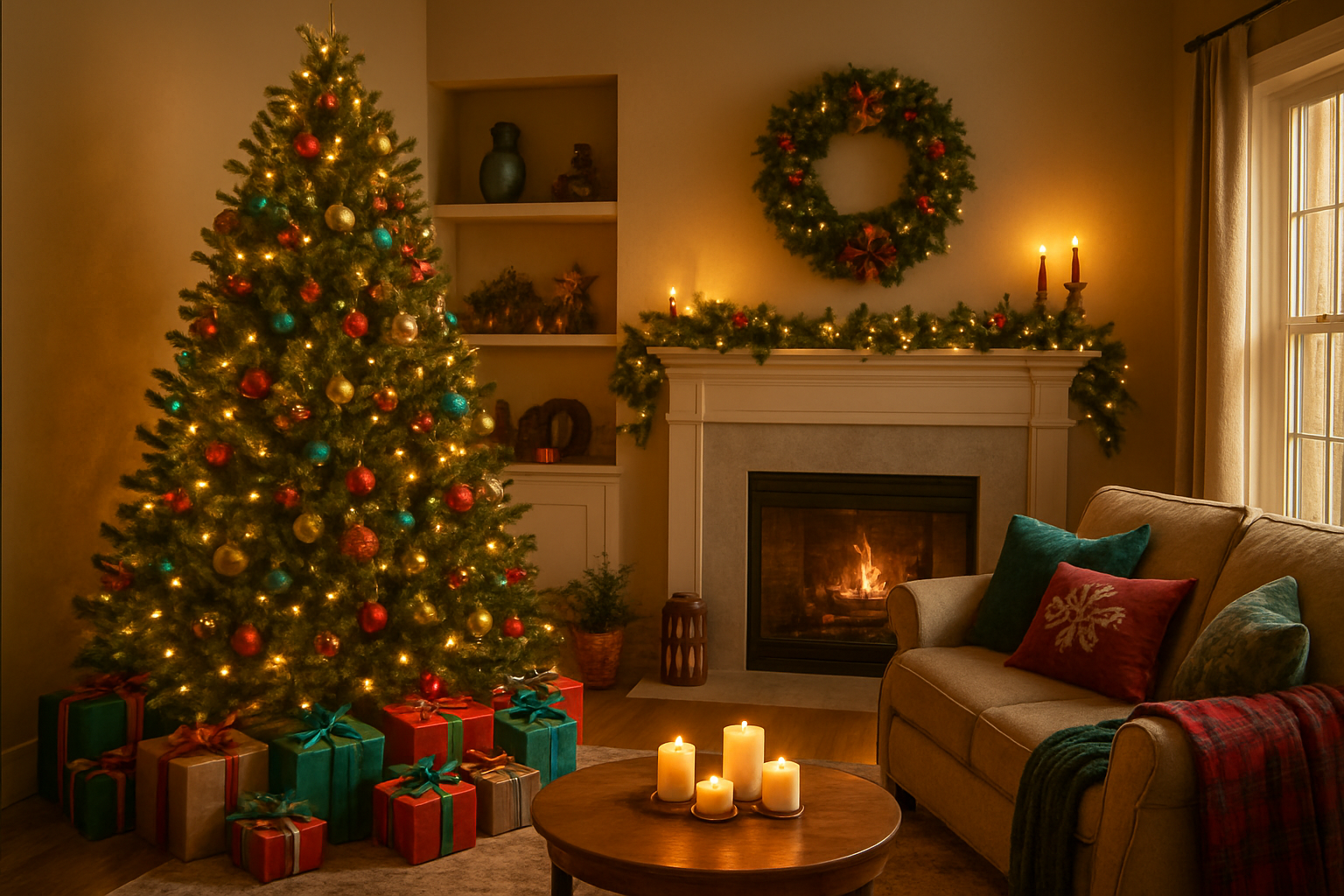
Christmas colors carry deep meaning that goes far beyond simple decoration choices. Red and green may dominate Western traditions, but colors like gold, purple, and white each bring their own rich symbolism to the holiday season. From the passionate red of love and sacrifice to the peaceful green of eternal life, these hues connect us to centuries of tradition while also reflecting our personal holiday memories and emotions.
The beauty of Christmas colors lies in their flexibility and personal meaning. Whether you stick with classic red and green, explore cultural alternatives like the blues and silvers popular in some countries, or create your own modern palette, the colors you choose can transform your space and mood. Start small this season – maybe add a pop of traditional gold to your existing decorations or try a completely new color scheme in one room. Let your Christmas colors tell your own holiday story.
Comments
Post a Comment